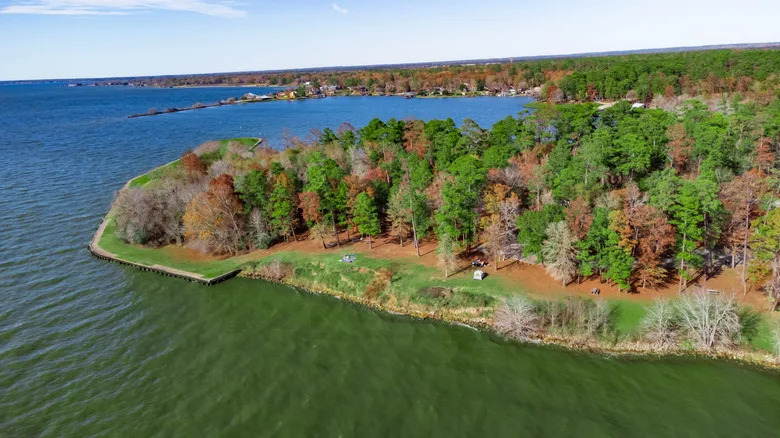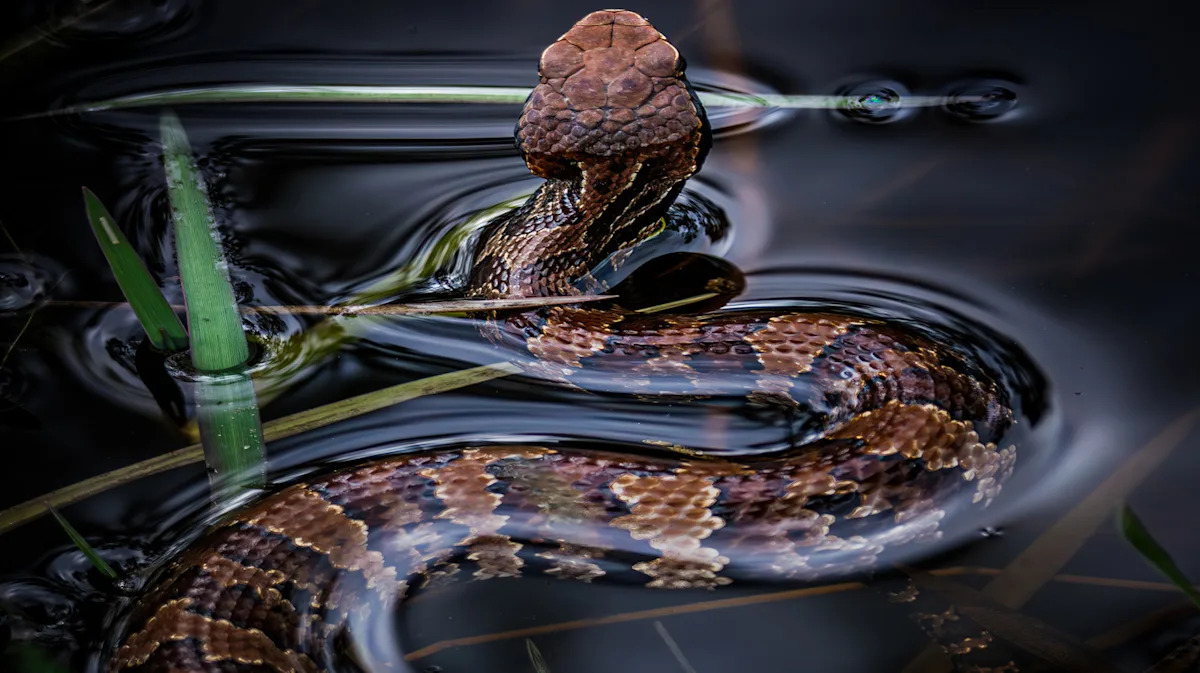We may receive a commission on purchases made from links.
Texas is home to more than 100 varieties of snakes, including over a dozen dangerous types of snakes. While it is widely known that rattlesnakes are among the creatures to beware of when adventuring in Texas deserts, it may come as a surprise that lakes in the Lone Star State are also snake infested. While it is prudent to keep an eye out for snakes when adventuring around any Texas lake, it is especially important to beware of snakes when visiting Lake Livingston, one of Texas’ biggest and most popular reservoirs.
All told, there are close to three dozen species of snakes found in and around Lake Livingston. Although the majority of these serpents are non-venomous, there are a healthy handful of venomous snakes to keep an eye out for as well.
Water moccasins, also known as cottonmouths, copperheads, and coral snakes, along with both timber and pygmy rattlesnakes, are found in the lake and forested lands which surround it. Additionally, even though they don’t deliver a dose of venom, some of the non-venomous species, such as water snakes, can inflict a painful bite. This combination provides reason enough for outdoor enthusiasts to practice snake-safe behaviors while visiting Lake Livingston.
Read more: Keep Your Campsite Snake-Free With These Easy Tips
How to stay safe from snakes at Lake Livingston
An aerial shot of Lake Livingston park, showing various different colored trees – Dr-Harsha Vardhan Reddy/Shutterstock
Covering more than 82,000 acres in the Piney Woods of East Texas, Lake Livingston is only an hour-and-a-half from downtown Houston. However, despite its relatively close proximity to Texas’ largest city, Lake Livingston feels as if it is worlds away. This is due largely to much of the lake, which is the second largest in Texas, being bounded by forest lands, including Sam Houston National Forest and Lake Livingston State Park. This ensure visitors have outdoor recreational opportunities on both water and land, but it increases the number of snakes they may encounter.
Given that many of the non-venomous varieties, such as diamondback watersnakes, banded watersnakes, and eastern hognose snakes are often confused for water moccasins, copperheads, and rattlesnakes, it is advantageous to know how to tell the difference between venomous and non-venomous snakes before adventuring here. The best bet, regardless of whether you believe a snake to be dangerous, is to stay a safe distance from any you may see.
When hiking along trails near Livingston or walking along the banks of the lake, it is important to watch your step. Never put your hands or feet somewhere you haven’t looked. Snakes are particularly prone to lay next to big rocks, so be particularly careful when stepping over or moving them.
For added protection, you can wear leggings like the ForEverlast Snake Guards when adventuring on land. In the water, avoid areas of dense vegetation, brush, or flotsam, which tend to attract moccasins. Additionally, never pick up objects floating on the water, as what you may believe to be a stick could actually turn out to be a snake.
Want more design inspiration? Join our free newsletter to get the best home and garden tips, design hacks, and DIY projects delivered right to your inbox. You can also add us as a preferred search source on Google.
Read the original article on Outdoor Guide.

